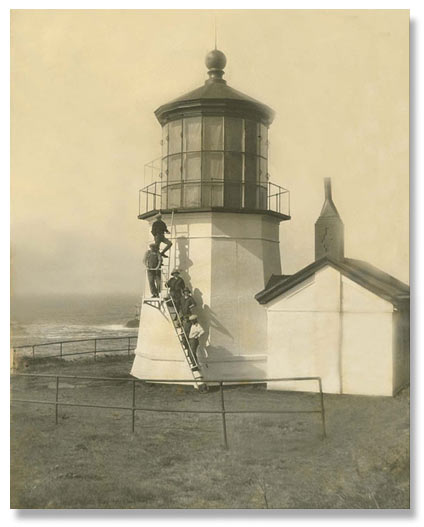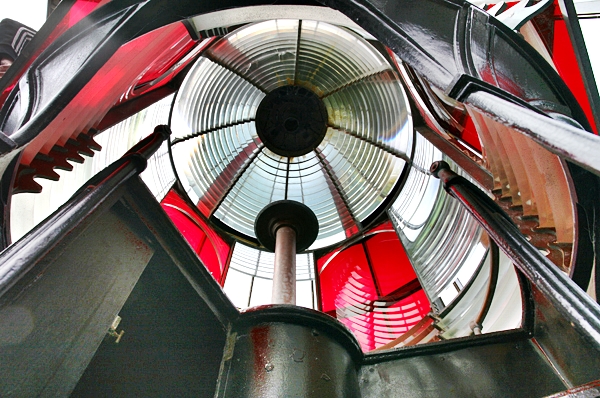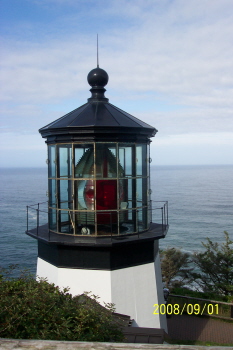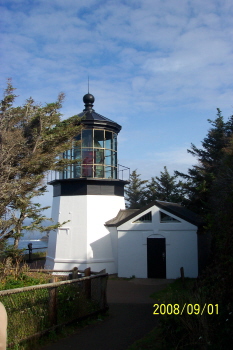The photos above are of the lighthouse at CAPE MEARES, just west of Tillamook,Oregon. Only 38 feet tall from the ground to the top of the round ventilator on the roof, this lighthouse, like many along the Pacific coast, sits on a high ledge and doesn’t need to be tall. The photo at the top of the page shows the high rocky cliffs of the northern Oregon shore, with the Cape Meares lighthouse perched on the edge. Its light shines many miles out over the ocean. It is unusual in that one approaches the lighthouse from above, and the first view you get is of the lantern room on top. The keeper’s residence and other station buildings, now removed, were in what is now the visitor parking area up above the lighthouse.

The photo above, taken during the lighthouse’s working days, shows the exterior ladder that gave access to the gallery deck, with many visitors in attendance. The original “work room”, now replaced with a recreated structure, is also shown. The lens is protected from daytime sunlight by curtains that are pulled around the inside of the lantern.
Like many others, it was deactivated by the Coast Guard years ago (a modern light shines from a tall metal tower nearby) and the keeper’s house and all the other buildings were removed. The small room attached to the lighthouse is a recreation of the “work room” that was originally there. Today it houses a small gift shop. Located within Oregon’s Cape Meares State Park, it is operated by the Friends of Cape Meares. Visit https://friendsofcapemeareslighthouse.com.
In these pictures you also get a good view of one of the fabulous prismatic lenses that allowed a single lightbulb (or oil lamp in earlier days) to be magified into a powerful beam seen for miles. Developed by a French engineer named Augustin Fresnel (Fre-nell), these lenses come in many sizes, and collectively are referred to still by the name “Fresnel”, although they were made by several firms in France and England. In all too many cases, these amazing devices were removed from lighthouse towers years ago, replaced by more modern, but no more efficient, light devices. Fortunately many do remain in lighthouses, or in museums where they can be appreciated. This specific lens, also a first-order lens built by the French firm of Henry-Lapaute, sadly is no longer illuminated, and in fact is missing a significant number of its prisms. To add more insult, vandals recently shot the lens several times with rifles, destroying even more of this priceless piece of history.

The photo above looks up inside the First Order lens, and shows the several red glass panels that were mounted exteriorly to the lens itself. As the lens turned it displayed and alternating “now white, now red” characteristic to the viewer. In this view, many of the main central “bulls-eye” prisms of the lens are missing.


